Following are two introductions to Amerasia‘s women’s issue “Where Women Tell Stories” by guest editors Stephanie Santos and Mary Uyematsu Kao. Accompanying the text are more photos from the “Buildin’ Bridges and Stirrin’ Waters” event on November 5, 2009 at UCLA’s Powell Library Rotunda.
Introduction
Ethical Dialogues
When we began working on this journal, I thought this issue of Amerasia was going to be a feminist issue. However, feminism—mainstream liberal feminism to be exact—was inadequate in articulating the narratives and knowledge of Asian American women. Jacqui Alexander wrote that to address liberal feminism’s ingrained sexual and racial mythologies, feminists must “become fluent in each other’s histories.” In this issue, we attempt to contribute to this greater fluency, initiating dialogue by bringing in the herstories of Asian American women.
Chandra Mohanty wrote of the challenges that lie in crafting noncolonized dialogues to enable a critical, multicultural feminism. Such dialogues are necessarily fraught with tension, because they entail destabilization and decentering of the traditional referents of white, mainstream, liberal feminism. One way to begin, suggests Mohanty, is to figure out how to “engage in ethical and caring dialogues across the divisions, conflicts, and individualist identity formations that interweave feminist communities in the United States.”
The articles in this issue attempt to build ethical and caring dialogues between these divisions. What happens when feminism, for example, is centered around the needs and concerns of immigrant garment workers in New York’s Chinatown? Katie Quan, in “Memories of the 1982 ILGWU Strike in New York Chinatown,” remembers the strike staged by members of the International Ladies’ Garment Workers’ Union (ILGWU), and the significance of organizing in the lives of the union members, as well as to the larger community. She writes, “The women participated in union activities, but also in non-labor events. . . . Labor and community were seamlessly integrated—what was good for workers was good for the community, and vice-versa.
What happens when feminism is centered around the needs and concerns of immigrant mothers of color? Laura Pulido, in “Immigration Politics and Motherhood,” notes how despite efforts to unite women based on “a general politics of motherhood,” mainstream feminists have not offered any real support to mothers from politically subordinated groups, such as immigrant women. Pulido’s article highlights how the motherhood of “racially and socially despised” mothers remains unrecognized by mainstream feminists. In fact, Pulido argues that motherhood’s potential to link diverse constituents is often thwarted by nativism and racism.
What happens when feminism is centered around the needs and concerns of transnational Filipinas and Filipina Americans, who collaborate within an “ever changing terrain of women’s organizing?” Annalisa V. Enrile and Jollene Levid, in their article “GABNet: A Case Study of Transnational Sisterhood and Organizing,” acknowledge the challenges of transnational organizing. Their response to Mohanty’s call for crafting ethical dialogues includes “a transformative style [of] organizing that is guided by actions and political campaigns in the Philippines but made concrete in the United States, sensitive to context and situation of the American mainstream and the marginalized Filipino immigrant communities.”
Allyson Tintiangco-Cubales and Jocyl Sacramento, in their article “Practicing Pinayist Pedagogy” contribute further to decentering mainstream liberal feminism. For the authors, Pinayism is a praxis that allows Pinays to “connect the global and local to the personal issues and stories of Pinay struggle, survival, service, sisterhood, and strength.” Through discussions of concrete pedagogical strategies such as boodoo doll creation and critical performance, Tintiangco-Cubales and Sacramento go beyond mainstream feminism to “engage the complexities and intersections” of multiple Pinay subjectivities, which in addition to gender also encompass, among other factors, class, race/ethnicity, spirituality, educational status, diasporic migration, and citizenship.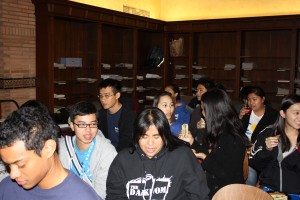
This issue of Amerasia Journal begins with articles grouped under the section “Narrative,” as many of the articles deal with giving voice to herstories that have been subjugated. Jolie Chea, in “Refugee Acts,” engages in an act of critical remembering as a way to subvert hegemonic historical accounts, writing “(t)hrough my grandmother, I have learned to see and listen to mouths that were not speaking, but bodies that were being. . .to think of new, alternative ways of seeing, to contest that which has already been established and not by our own selves, but by others.” In “Mother, May I?,” Carrie Usui shares how a shared type II diabetes diagnosis allowed her mom and herself to move “in between mother and daughter lines, between caregiver and person in care, learning together in how to live this new life, while at the same time better understanding our pasts.”
The second section, “Power,” addresses the themes of collaborations between women of color, between activists for social justice.
We end with a section on “Knowledge,” often painfully gained from the place-making and activist efforts detailed in the first two sections. “This work [organizing around women’s issues] can also be dangerous,” writes Ketu Katrak in her article “Transnational Links: South Asian American Women’s Organizations and Autonomous Women’s Groups in India,” since activists risk greater violence. “It may be as strategic,” Katrak states, “to subvert the system from within. . .and to live another day in order to tell one’s story.”
Though this is the first Amerasia Journal specifically designated a “women’s issue,” it is not the first time that Amerasia has dealt with issues affecting women. However, we do recognize that both feminist analysis and ethnic studies have weaknesses in articulating the herstories of Asian American women. This issue is our own attempt to craft bridges between these discussions. It is our hope that other scholars and activists would in turn fill in the gaps and elisions in the work that was begun here.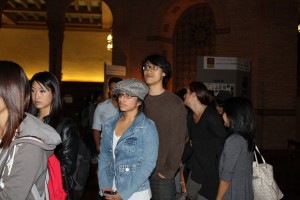
Initially, I approached this issue of Amerasia Journal as a feminist issue, one that would highlight the key tenets of Asian American feminisms. I have since seen how sexist oppression by itself is not an inclusive enough foundation on which to build feminist solidarity. In fact, this formulation leads to what Roshni Rustomji identifies as a “salvation” narrative in her article “Subverting the Hierarchy, Collaborating Narratives.” Feminists who are privileged through factors like race, class, or citizenship get trapped into the mindset of asking, “What can I do for them?” This is a feminism still centered on oneself as a referent, one who is acting for and not in solidarity with the Other.
bell hooks offers a powerful method of shifting this emphasis by recasting the phrase “I am a feminist” into “I advocate feminism.” hooks has defined feminism as “a movement to end sexism, sexist exploitation, and oppression.” hooks’ recasting allows us to focus on ending sex- and gender-based oppressions by addressing their many intersecting causes. Emphasizing the action of advocating feminism, instead of a feminist identity, also allows for more dynamic political involvements, whether with undocumented mothers, refugees, immigrant garment workers, or social justice activists.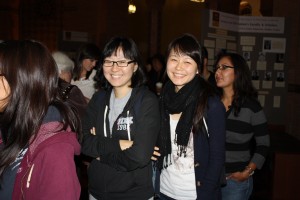
This is perhaps my roundabout way of saying that despite my misgivings about the term, I see this Amerasia Journal women’s issue as an issue that advocates feminism—one that contributes to the practice of multicultural and antiracist feminisms.
—Stephanie D. Santos
Virtual Sisterhood
Somehow, since the 1960s and 70s, sisterhood got sideswiped by “feminism.” For some of the younger generations, they are being sold a bill-of-goods that feminism is all about “self-empowerment.” Self-empowerment is good for every healthy human being, especially in the kind of society we are living in here in the U.S. But self-empowerment has been commodified, just as having an African American president has become America’s latest commodification in an attempt to drag our asses out of a huge financial abyss. Self-empowerment has been repackaged away from its original intents, and now comes at us as straight-up individualism to enable you to play the capitalist rat-race game of dog-eat-dog social norms. This weakens a people and keeps you divided so you can remain conquered. The dynamics of today’s situation with social and political movements of the left in total disarray, this really has to be a soul-searching time on the real lessons learned from the 1970s movements.
More from “Virtual Sisterhood,” below the fold…
Virtual sisterhood is something that only the hi-tech new age could bring with any kind of credibility. This women’s issue of Amerasia is a creation of virtual sisterhood. Even though we never had a meeting with everyone involved, all of the authors of this issue share common convictions of how we see ourselves as women of color in the U.S. The collective experiences from overlapping generations of women represented here show a continuing trend for women of color to seek creative ways to exercise their power as women. We choose to define our own issues and ways of dealing with those issues that take into account communities beyond just ourselves as women.
It has been horrifying to think that Amerasia has never had a “women’s issue.” In my own two decades working on Amerasia, the idea of a women’s issue seems to have floated around like wispy strands of smoke at editorial board meetings that occurred once every three to five years. I have been promoting this issue as the “first women’s issue” of Amerasia. However, after talking with Emma Gee, editor of the voluminous Counterpoint: Perspectives on Asian America, she confirmed just as we go to press that there was a women’s issue of Amerasia in 1975. So that has kind of taken the full irony out of the facsimile of the call for a women’s issue on page vi, which I had thought was left unanswered for all these years. It still serves as an important historical artifact to open this issue, since the topic of differences with the white feminist movement has continued on to the present day.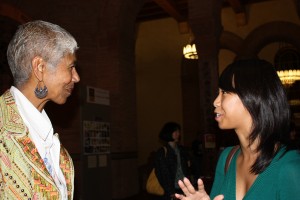
The name for the issue comes from the frontcover photograph taken by Charles Kerns, husband of Roshni Rustomji, our lead author for this issue. The words “where women tell stories” instantly stuck in my mind, as I looked out of the balcony of the Casa de Protección a la Joven in Oaxaca, Mexico, where Roshni has spent much time working with and learning from the women in the region. I immediately felt calm looking out of the window at the bright pastels of the houses across the street, giving a cheerful lift to the lush green shade of the tree. You can feel the comfort that women have there to share and learn and do work and have fun together. It is a sisterhood of the old-fashioned kind, where you might be stuffing “empenadas de India” while sharing stories from your lives. As a Pakistani-born woman who has lived in many different parts of the world, Roshni opens this first women’s issue with her learning what happened to women during the uprising in Oaxaca in late 2006. She and her friend/colleague at the Casa, Luz de la Rosa, share together in a piece about how we can best learn from each other by not putting hierarchies into the situation. Roshni is a long-time editorial contributor to Amerasia Journal.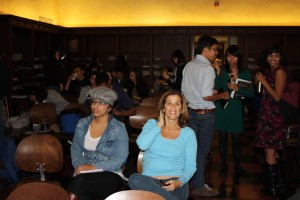
Working on this issue has created a loose kind of sisterhood. Virtual is virtual, it’s not the same as reality. But it is amazing what kinds of things you can get done—maybe even better than if you were in a shared physical environment where work reaches a combustion point, with flare-ups and explosions, arguments, passionate exchanges of views. Those might be necessary for a synthesis of views, but we are still in a preliminary stage in surveying what we are trying to understand about ourselves as Asian American and Pacific Islander women. We think its important to get a feel for what is out there that we don’t know about. There is a certain comfort in putting forth comments and suggestions on others’ written pieces over email that might be more difficult to do in person. We respected each other’s space and contribution and Stephanie and I tried to pull it all together to create a kind of wholistic feminism. Well nothing is ever complete, and we as always are just barely scratching the surface.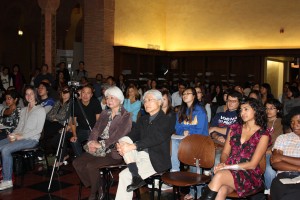
We just want to open the doors wide so that voices that have never been heard before can be heard here. Roshni and Luz explore how we might get to hear those voices through their work with women at the Casa.
Our original call for papers asked for articles about Asian American and Pacific Islander women in social justice movements and what role do they play and what kinds of issues and strategies do they have as women within these larger movements. Roshni’s first response was to talk about how the “movement activists” in Oaxaca were not asking the local everyday folks what they wanted.
By the same token, Dai Sil Kim asks us—“Do You Hear Their Voices?” as she narrates her visit to South Korea to talk to former “Comfort Women”—those who served as sex slaves for the Japanese military before and during World War II. She self-critiques her original approach of seeking to give these women their voices, realizing a certain arrogance in that. By asking you if you hear their voices, she challenges you to learn their history.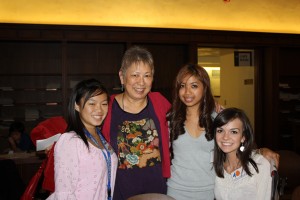
Fuifuilupe Niemetolu’s words jump right into you. A gracious spirit, Fuifuilupe leaves you with more questions than answers. We are grateful to publish these two poems from her, giving us a glimpse into one Tongan woman’s struggle with her Mormon upbringing. Irene Suico Soriano’s stories of local and transnational Pinays make you feel the lives and deaths of these women, that you might not otherwise have ever wondered about. She tells us stories of what it is like to leave your homeland to work, send money home, take care of other people’s children, dirty houses, or sick people—and be lucky if you can go home to visit the family you are trying to support from another part of the world.
The Khmer Girls in Action of Long Beach are real attention catchers with their positive program for young Cambodian women to educate themselves in how to adapt to this country. Their creative expressions bring back what it is like growing up as a young Asian American/Pacific Islander woman in a complex world like L.A. or Long Beach.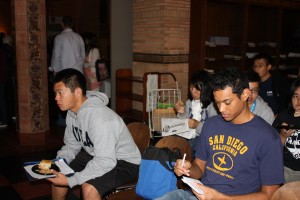
Katie Quan’s telling of her experience from seamstress to shop steward to organizer for International Ladies’ Garment Workers’ Union (ILGWU), Local 23-25, is a truly inspiring story—especially because it is told in her own voice. One of the main organizers of the 1982 New York Chinatown Garment Strike, Katie challenged white men in the union leadership to change and adapt to their membership, so that immigrant Chinese women could feel a part of the union. And what a treat to have a conversation between Ericka Huggins and Yuri Kochiyama, who met for the first time to contribute to this women’s issue. They share some of their life’s lessons from decades of work in social justice movements of all kinds, and refocus what are some important tasks for us today.
Laura Pulido also gives us an inside/outside look into immigrant Mexican women and how motherhood complicates citizenship questions. With the threat of a pandemic of the “swine flu,” conspiracy theorists have spun out the possibility that the real issue at hand is how to close down the U.S.-Mexican border. There are now references to a “new Berlin wall” being built just south of here.
My own piece on “Three-Step Boogie” speaks of a sector of women in the 1970s Los Angeles Asian American Movement that I was a part of. Other histories of the Movement that I have read have been somewhat different from my take on how things happened and what they meant. This is perhaps a difference between those who lived through the Movement, and those who have interviewed people from the Movement, but never experienced it themselves. I focus on Japanese American women instead of pan-ethnic Asian American women because we come from different immigration histories. These particular histories are an important part of the analysis of how women’s oppression manifests itself in specific ethnic communities.
Just a note on the sections. Narratives, Power, Knowledge. From our narratives we gain knowledge that enables us to exercise our power—seemed like a logical progression. Russell rearranged the order—by putting power at the center of narratives and knowledge, it is understanding how our narratives and exercising power give us new knowledge. Power can not be the end, because power presents its own evils—and it is usually very temporary. Power can turn the victim into the villain.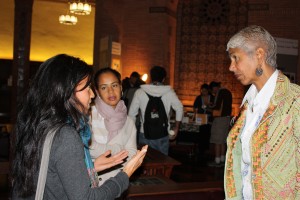
Anyways, we hope you enjoy this first women’s issue of Amerasia. It was a lot of work, but it was very rewarding and well worth all of the effort that went into this. I thank Russell for allowing us to guest edit this long-time coming women’s issue.
All power to sisterhood (including virtual). . . .
—Mary Uyematsu Kao

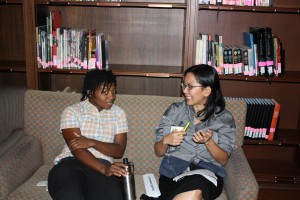
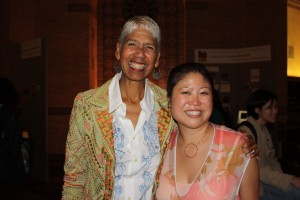
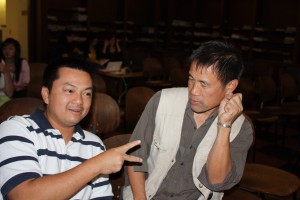
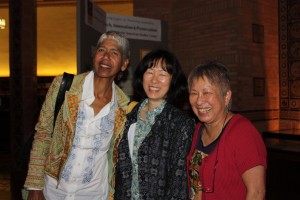
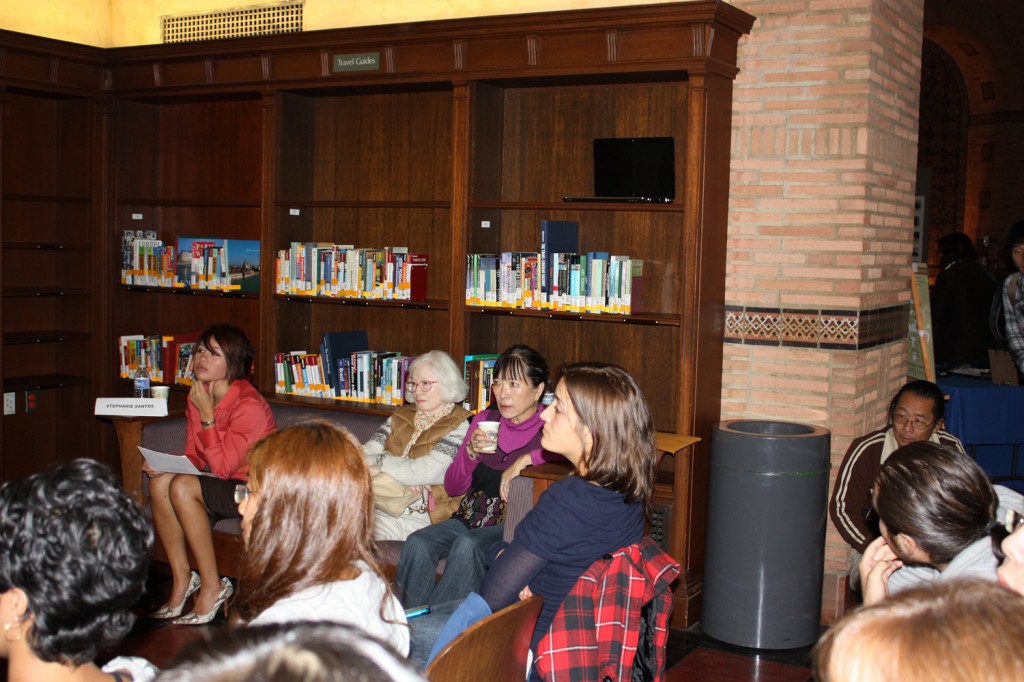
 Amerasia on Facebook!
Amerasia on Facebook!